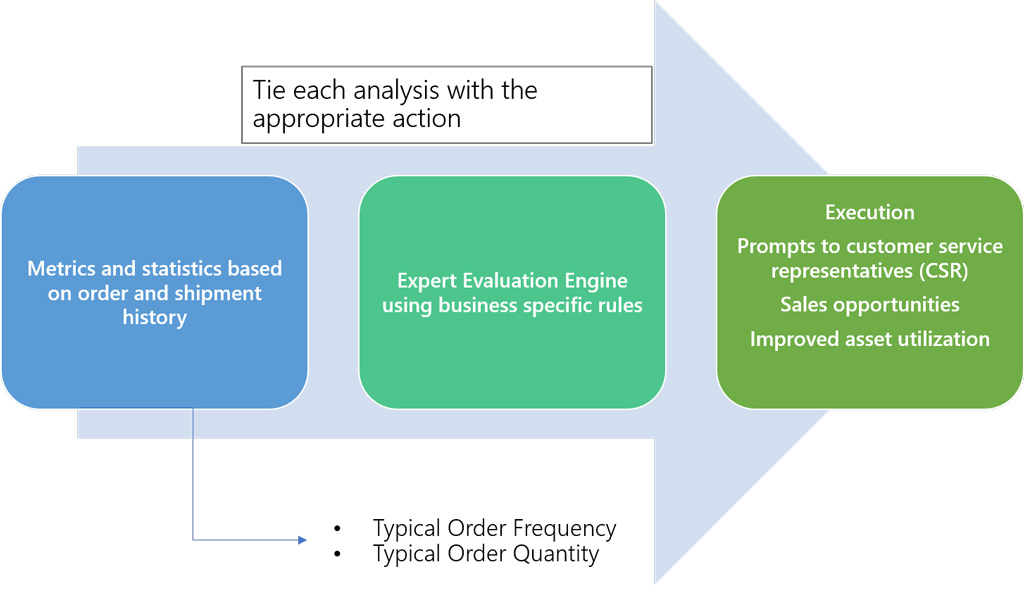
How do you get the sense of what works for demand planning?
While making a good sauce often does not require as much precision as baking does, it requires a general sense of measurement. Good chefs are often able to whip out soups and sauces without measuring every ingredient accurately. They start to get a sense of what works.
Improving Demand Planning
The ‘secret sauce’ concept to demand planning is a little bit trickier. Market volatilities including changes in the weather can affect any business at any given time. As such, businesses cannot rely on their history alone without considering the full picture of possible market changes. When these changes occur, businesses should be ready to adapt without causing a disruption in existing business processes.
So how to do you get to the point where you get a sense of what works when it comes to demand planning?
Or is that even an attainable goal?
Firstly, due to needing to quickly react to market trends, while most businesses should aim at creating stable and sustainable demand planning processes, they should also strive to employ a continuous improvement strategy. Compare it to a chef modifying existing recipes with new ingredients to create a completely new rendition of an existing dish.
Recently, I presented two sessions at the SAPinsider SCM conference on demand sensing and demand shaping. While these sessions were aimed at upstream manufacturers, the general concepts that were discussed can be applied to any manufacturing businesses. If you are interested in improving your existing demand generation and shaping initiatives, you might enjoy our upcoming webinar.
[Read Also: B2B Demand Sensing: 7 Things You Must Know ]Demand Sensing
Demand sensing is a robust methodology that involves using historical data, near-term market signals such as POS data, changes in the weather and market conditions, to improve forecast accuracy for inventory planning. At the demand sensing stage, businesses put the ground work in place to sense the trends in the demand, whether it is going up or down, and if it will hit the company targets.
Key elements of demand sensing:
- Uses POS, market buzz, and other consumer facing data
- Improves demand signals available to companies, which helps to increase forecast accuracy and reduce inventory levels.
- Determines if Demand Generation & Shaping are needed
Demand Generation and Shaping
Demand generation and shaping work hand in hand. With Demand generation, businesses use targeted marketing campaigns designed to drive awareness and interest in a company’s products or services. Demand shaping follows a similar fashion. For demand shaping, B2C companies often employ price incentives, cost modifications and product push to help meet planned supply. Often, the above demand shaping tactics are not available in the B2B world. Demand shaping can be geared towards getting rid of excess inventory or to drive sales to certain products or services.
Key elements of demand generation and shaping
- Targeted marketing campaigns designed to drive awareness and interest in a company’s products or services.
- May Execute Demand Shaping strategy through marketing communication.
- Demand shaping involves influencing or manipulating demand for a company’s products or services to match planned supply.
- Performed through pricing incentives, cost modifications, and product substitutions.
How do you accomplish demand generation and shaping?
For our clients looking to improve existing demand generation and shaping initiatives, we often employ a detailed three-step approach.
The Three Step Approach to Implementing Demand Generation and Shaping
Step #1: Identify Goals
The first step in implementing or improving existing demand generation and shaping projects involves identifying business goals to ensure the initiatives match the bigger business picture.
Key questions to ask include:
- What are we trying to accomplish?
- Are Demand Generation & Shaping opportunities available?
- What will be the impact of an action/inaction?
Step #2: Capture Data
Once you’ve identified the business goals and determined how demand shaping and generation aligns with your plan; it’s now time to determine how to use existing data to help improve demand shaping.
Things to note:
- Analyze historical data and compare it to the current local situation
- Always use as much historical data as possible for a better statistical analysis
- Identify ways to create demand opportunities
Step #3: Configure Solution
At the third stage of the demand generation and shaping project, we tie everything together by configuring a software solution that eliminates the need for manual data manipulation. The graphic below describes a demand generation and shaping analysis. In the example below, the solution configured was for an upstream manufacturer, about three or more layers removed from the end user. In this case, the execution involved proactive order solicitation using order frequency analysis, therefore, leading to an increase in sales, fewer missed orders, and most importantly improved customer relationships. In the upcoming webinar on demand shaping, I will share more practical examples on how customers are not only figuring out what works, but also exceeding set sales targets due to demand shaping initiatives. It might even be safe to say that they may have discovered their ‘secret sauce’ to demand planning.
[Download Guide: Forecasting Fallacy Locking A Piece Of A Forecast ]





